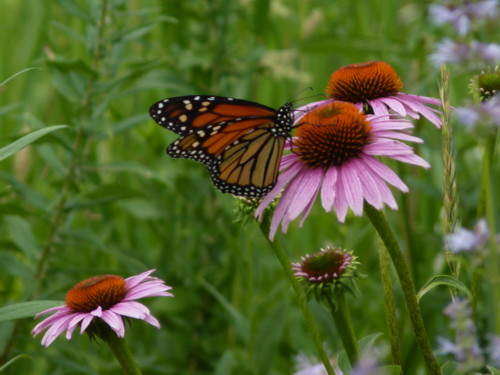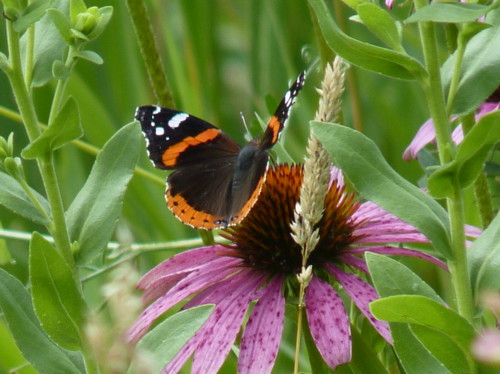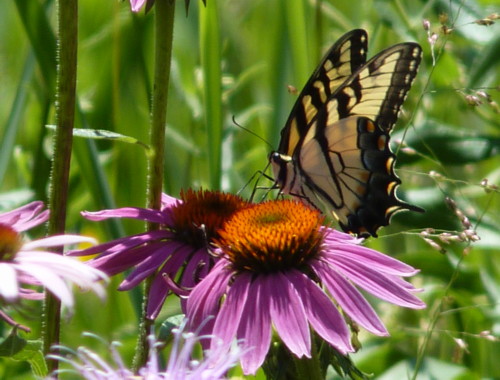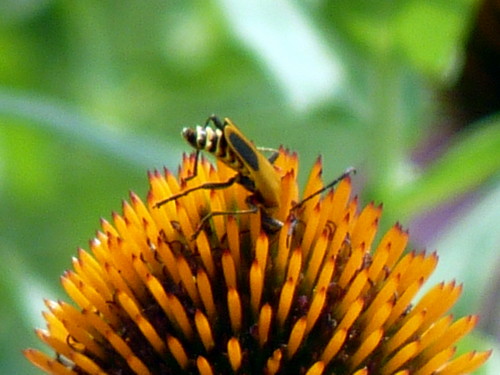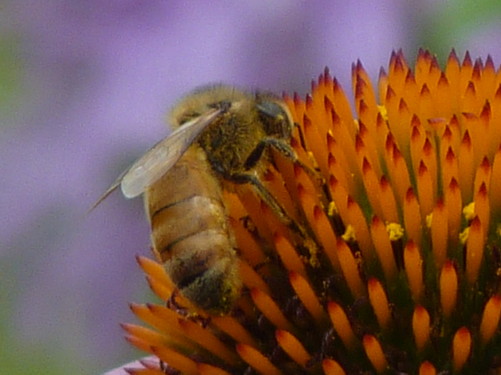The wildflower area behind our house is loaded with wildflowers, and the wildflowers are loaded with insects. I swear, the flowers “sounded” different today. It sounds like August. There’s more buzzing, more cicada-like sounds, and much more insect activity.  Ewww. So I took pictures.
There are lots of purple cone flowers, beautiful by themselves:
But I’m starting to see them as bait for these little guys…a monarch butterfly:
…a red admiral butterfly:
And remember the tiger swallowtail from a week or two ago?
Even the soldier beetles want to get into the action:
Okay, I promise to have something sewing related soon.
–Sue


